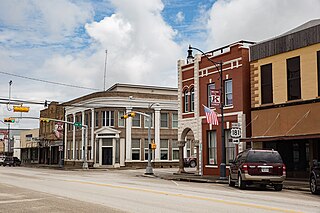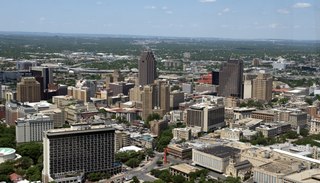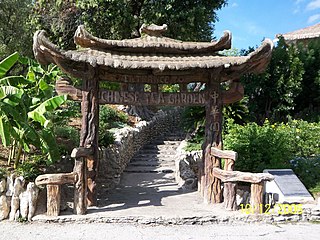| Part of a series on |
| Ethnicity in Texas |
|---|
|
Japanese Texans are Japanese Americans living in Texas.
In 1902, the Houston Chamber of Commerce requested help from Japanese Consul General Sadatsuchi Uchida in improving Texas rice production techniques. [1] At least thirty attempts were made by Japanese to grow rice in the state at this time, with two of the most successful colonies being one founded by Seito Saibara in 1903 in Webster, and another by Kichimatsu Kishi in 1907 east of Beaumont. [2] [3] Within three years of Seito's farm being established, area rice harvest nearly doubled. By 1910, the Japanese population was around 300. [1]
A second wave of Japanese began arriving in 1920, some moving from California to avoid discrimination there. Although conditions were better than some other states, Japanese families attempting to move to Texas were turned away by a hostile mob in 1921, and the Texas legislature, following the precedent set by the California Alien Land Law of 1913, passed its own law restricting Japanese ownership of land. [2] The Immigration Act of 1924 severely limited Japanese immigration to the country, and most Japanese moving to the state during this period were second or third-generation members of the Japanese diaspora.
In 1940, there were around 500 Japanese living in Texas. In response to anti-Japanese discrimination following the bombing of Pearl Harbor, the Jingu family which maintained the Japanese Tea Garden in San Antonio were evicted and the garden was renamed the Chinese Tea Garden. (The name was restored in 1984). [2] During World War II, camps used for the internment of Japanese Americans in Texas included the Crystal City Internment Camp, the Kenedy Allen Detention Camp at Kenedy, Texas, the Federal Reformatory for Women in Seagoville, Fort Bliss in El Paso, and Fort Sam Houston in San Antonio.[ citation needed ] The University of Texas at Austin offered classes to some internees. [4]

Texas is a state in the South Central region of the United States. At 268,596 square miles (695,660 km2), and with more than 30 million residents in 2023, it is the second-largest U.S. state by both area and population. Texas shares borders with the states of Louisiana to the east, Arkansas to the northeast, Oklahoma to the north, New Mexico to the west, and the Mexican states of Chihuahua, Coahuila, Nuevo León, and Tamaulipas to the south and southwest; and has a coastline with the Gulf of Mexico to the southeast.


Fulshear is a city in northwest Fort Bend County, Texas, United States, and is located on the western edge of the Houston–The Woodlands–Sugar Land metropolitan area. The population was 16,856 as of the 2020 census.

Kenedy is a city in Karnes County, Texas, United States, named for Mifflin Kenedy, who bought 400,000 acres (1,600 km2) and wanted to develop a new town that would carry his name. The population was 3,473 at the 2020 census, up from 3,296 at the 2010 census.

The University of Texas System is a Public university system in the U.S. state of Texas. It includes nine universities and five independent health institutions. The UT System is headquartered in Downtown Austin. Its total enrollment of nearly 240,000 students is the largest university system in Texas. It employs 21,000 faculty and more than 83,000 health care professionals, researchers and support staff. The UT System's $30 billion endowment is the largest of any public university system in the United States.

South Texas is a region of the U.S. state of Texas that lies roughly south of—and includes—San Antonio. The southern and western boundary is the Rio Grande, and to the east it is the Gulf of Mexico. The population of this region is about 4.96 million according to the 2017 census estimates. The southern portion of this region is often referred to as the Rio Grande Valley. The eastern portion along the Gulf of Mexico is also referred to as the Coastal Bend.

The San Antonio Japanese Tea Garden, or Sunken Gardens in Brackenridge Park, San Antonio, Texas, opened in an abandoned limestone rock quarry in the early 20th century. It was known also as Chinese Tea Gardens, Chinese Tea Garden Gate, Chinese Sunken Garden Gate and is listed on the U.S. National Register of Historic Places. It is located on the northwestern edge of Brackenridge Park, near the San Antonio Zoo.
Kichimatsu Kishi was a Japanese immigrant to the United States who worked as a farmer and businessman. Along with fellow immigrants from Japan, his impact on rice farming in the southern United States would change the agricultural industry of the region. Kishi would establish an agricultural colony in Southeast Texas and would own an oil company. Born as one of eight children to a Japanese banker, he attended Hitotsubashi University in Tokyo, Japan, but was taken from his studies in 1904 to fight in the Russo-Japanese War.

Interstate 69 (I-69) is an Interstate Highway that is in the process of being built in the US state of Texas. It is part of a longer I-69 extension known as the NAFTA superhighway, that, when completed, will connect Canada to Mexico. In Texas, it will connect Tenaha and the Louisiana segment of the route through the eastern part of the state and along the Texas Gulf Coast to Victoria, where it will split into three branches: I-69E to Brownsville, I-69C to Pharr, and I-69W to Laredo. The first segment of I-69 in Texas was opened in 2011 near Corpus Christi. The American Association of State Highway and Transportation Officials (AASHTO) approved an additional 58 miles (93 km) of US 77 from Brownsville to the Willacy–Kenedy county line for designation as I-69, which was to be signed as I-69E upon concurrence from the Federal Highway Administration (FHWA). FHWA approval for this segment was announced on May 29, 2013. By March 2015, a 74.9-mile (120.5 km) section of US 59 had been completed and designated as I-69 through Greater Houston. As of 2023, short segments near the southern terminuses of the three branch routes have also all been completed. These branches are planned to be connected.

Dionicio Rodríguez (1891–1955) was a Mexican-born artist and architect whose work can be seen in Alabama, Arkansas, Illinois, Maryland, Michigan, New Mexico, Tennessee, and Texas, as well as Washington, D.C., and Mexico City.

Shinpei Mykawa was a Japanese rice farmer who introduced the cultivation of rice in parts of southeast Texas. The community of Mykawa and Mykawa Road in Houston are named after him.

The Church of Jesus Christ of Latter-day Saints in Texas refers to the Church of Jesus Christ of Latter-day Saints and its members in Texas. Official church membership as a percentage of general population was 1.13% in 2007 and 1.21% in 2014. According to the 2014 Pew Forum on Religion & Public Life survey in both years, roughly 1% of Texans self-identify themselves most closely with the LDS Church.

Crystal City Internment Camp, located near Crystal City, Texas, was a place of confinement for people of Japanese, German, and Italian descent during World War II, and has been variously described as a detention facility or a concentration camp. The camp, which was originally designed to hold 3,500 people, opened in December 1943 and was officially closed on February 11, 1948.
John Lapham Bullis was a much-decorated American soldier and later an entrepreneur.

The 2014 United States Senate election in Texas was held on November 4, 2014, to elect a member of the United States Senate. Incumbent Republican senator and Senate Minority Whip John Cornyn ran for re-election to a third term. Primary elections were held on March 4, 2014. Since no Democratic candidate received over 50% in the first round of the primary, a runoff election was required on May 27, 2014. David Alameel, who came in first in the primary, won the runoff and became his party's nominee. In the general election, Cornyn defeated Alameel in a landslide.
The 1919 Baylor Bears football team was an American football team that represented Baylor University as a member of the Southwest Conference (SWC) during the 1919 college football season. In its sixth season under head coach Charles Mosley, the team compiled a 5–3–1 record and was outscored by a total of 92 to 19.
This article discusses Japanese Americans and Japanese citizens in Houston and Greater Houston.

Guy Carleton was a career officer in the United States Army. He attained the rank of major general, and is best known for his World War I command of Camp Wadsworth and the 96th Division.
The United States government has detained or interned immigrants on military bases on several occasions, including as part of internment of Japanese Americans, of Italian Americans and of German Americans during World War II. In the 2010s, military bases have been used to house unaccompanied asylum seekers from Central America.